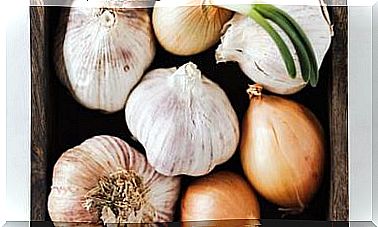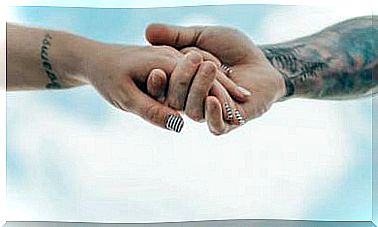“What Is Emitted Into The Environment Ends Up In The Placenta”
Environmental health expert Nicolás Olea suggests that we take measures against pollutants with hormonal effects, dangerous endocrine disruptors.

We all have a series of pollutants in our blood called endocrine disruptors that can cause serious health problems. They have entered the body with what we eat, what we touch or the air we breathe.
Nicolás Olea, professor at the Faculty of Medicine of the University of Granada, is an expert in endocrine disruptors and advises reducing exposure to pollutants with hormonal effects.
Nicolás Olea: bisphenol crosses the placental barrier
After listening to Dr. Olea, words like “phthalates” or “bisphenol” are no longer forgotten and the only thing left is the determination to reduce contact with substances that alter our hormonal system.
–The epidemiologist López Abante, from the Carlos III Health Institute, has published mortality maps showing that some types of cancer are increasing. Do you have any explanation?
–It increases, for example, the bladder, which is a typical cancer of workers in the chemical industry. But the biggest threat is colon and rectal cancers, which are increasing 2.6% in women and 4.1% annually in men.
It seems that there is an association to be demonstrated between this type of cancer and industrial activity and incinerators. Breast cancer is also rising in our Granada registries at 3.7% annually.
– What can be the explanation for this increase in breast cancer?
– It seems linked to industrialization. In 1995 we investigated whether the use of pesticides such as DDT in the 70s could be related to the increase in cases registered 20 years later. We took adipose tissue samples from 300 women with cancer and 400 healthy women.
We were looking for pesticide levels and we also determined estrogenicity, the hormonally active load of crap. It came out that there was an association.
– Is exposure to environmental pollutants the only factor?
–No, there are many variables involved, some increase the risk and others reduce it. For example, we saw that there is a greater risk among women who have given up protective factors such as having a child before age 19, having more than 5 children, or accumulating at least 34 months of breastfeeding.
“Plastic bottles with bisphenol A have been banned, but in all offices there is a water source whose bottle is made of polycarbonate”
– Why does it protect to have a child so soon?
–The medical books say that an early pregnancy produces a transformation of the breast tissue that makes it resistant to carcinogenesis.
A mathematician who participated in our studies and who did not know anything about medicine told us, “Could it be that pregnancy makes you lose pollutants, and the more pregnancies and the more lactation, the cleaner the mother’s breast is?”
–But then the pollutants are taken away by the child. In the end it will turn out that breastfeeding is not good … –
No, no. Pediatricians know that it is very beneficial for other reasons. But be careful where you come from, because you give it everything you have accumulated. During gestation the baby is already being exposed to a number of pollutants.
– I know several children who have suffered cryptorchidism.
-It is very frequent. Cryptorchidism consists in that at the time of birth the baby does not present the testicles in the scrotal bags. It is one of the consequences of overexposure to environmental estrogens during pregnancy.
Our studies have shown that in southern Andalusia there was a relationship between the incidence of cryptorchidism in newborns and the consumption of forest pesticides in the municipality and that the risk increased with the consumption of cosmetic products and with weight gain during pregnancy .
–So obese people in general are at higher risk.
–And in turn, being overweight can be a consequence of the action of these substances. Obesity and diabetes are on the rise everywhere. Again we found that the greater the accumulation of persistent organic pollutants, the higher the incidence of type 2 diabetes, which is the one diagnosed in adults.
–What is a DES boy or girl?
–During the 1960s and 1970s, a drug called diethylstilbestrol (DES), a synthetic estrogen, was used to prevent miscarriages. In the late 1970s it was banned because it increased the risk of vaginal and breast cancer.
In gynecology consultations in France or the United Kingdom, women are asked if their mothers underwent this treatment. In Spain, where this drug was marketed under the name Protectona, we have not succeeded.
“How long is it going to be until the government says that the pans do not have to contain PFOS and PFOA or the phthalate bath gels?”
–The problems you are talking about are due to endocrine disruptors, what are they, how are they defined?
They are “chemical substances that have adverse effects on the health of an organism or its offspring as a result of changes in endocrine function.” They are not mutagenic, they are not carcinogenic, so they escape toxicological controls.
Natural estrogens do not cross the placental barrier, because evolution has protected us, but we have invented artificial substances such as bisphenol with estrogenic effects that are capable of crossing that barrier.
–How do we come into contact with bisphenol A?
Polycarbonate bottles were banned in 2011 because they contained bisphenol A and were considered a risk to babies. However, in every office in Spain there is a water source whose drum is made of polycarbonate (the triangular recycling code number 7 can identify this plastic).
–Flame retardants, pesticides, bisphenol … are we exposed to more disruptors every day?
-Many more. For example, the perfluorinated alkyls (PFOS and PFOA) that are in the composition of non-stick cookware, teflon type, and in garments waterproofed with Goretex.
–More disruptors: phlates. Is it enough to avoid PVC plastic?
–These additives are used to make soft plastics such as PVC. Given the evidence of their harmful effects, the EU banned them in nipples, pacifiers and teethers.
But this measure has not ended the problem because they are still present in food packaging, in clothing dyes, in perfumes and lipsticks …
-What can we do?
–Some manufacturers of shower gels already sell products with 0% phthalates, but most people still don’t know what the advantage is.
How long is it going to be until the government says that the pans do not have to have PFOS and PFOA nor the phthalate bath gels? We do not have to wait to find the damage, with lots of sick people, to take action.









